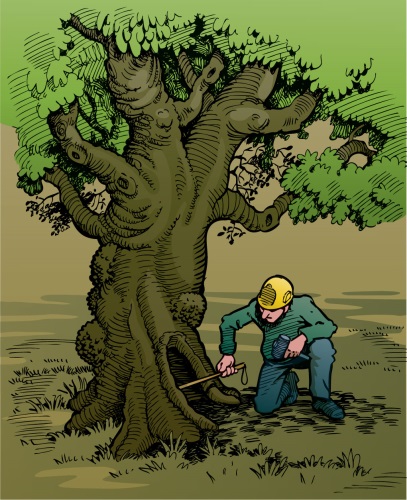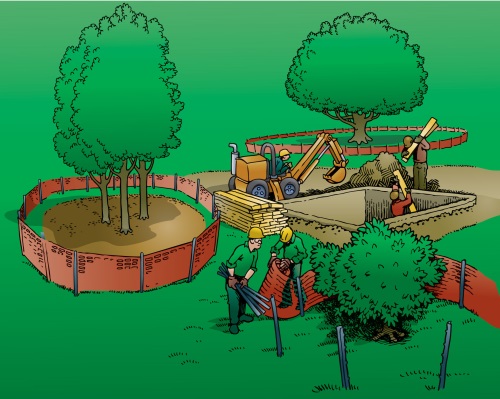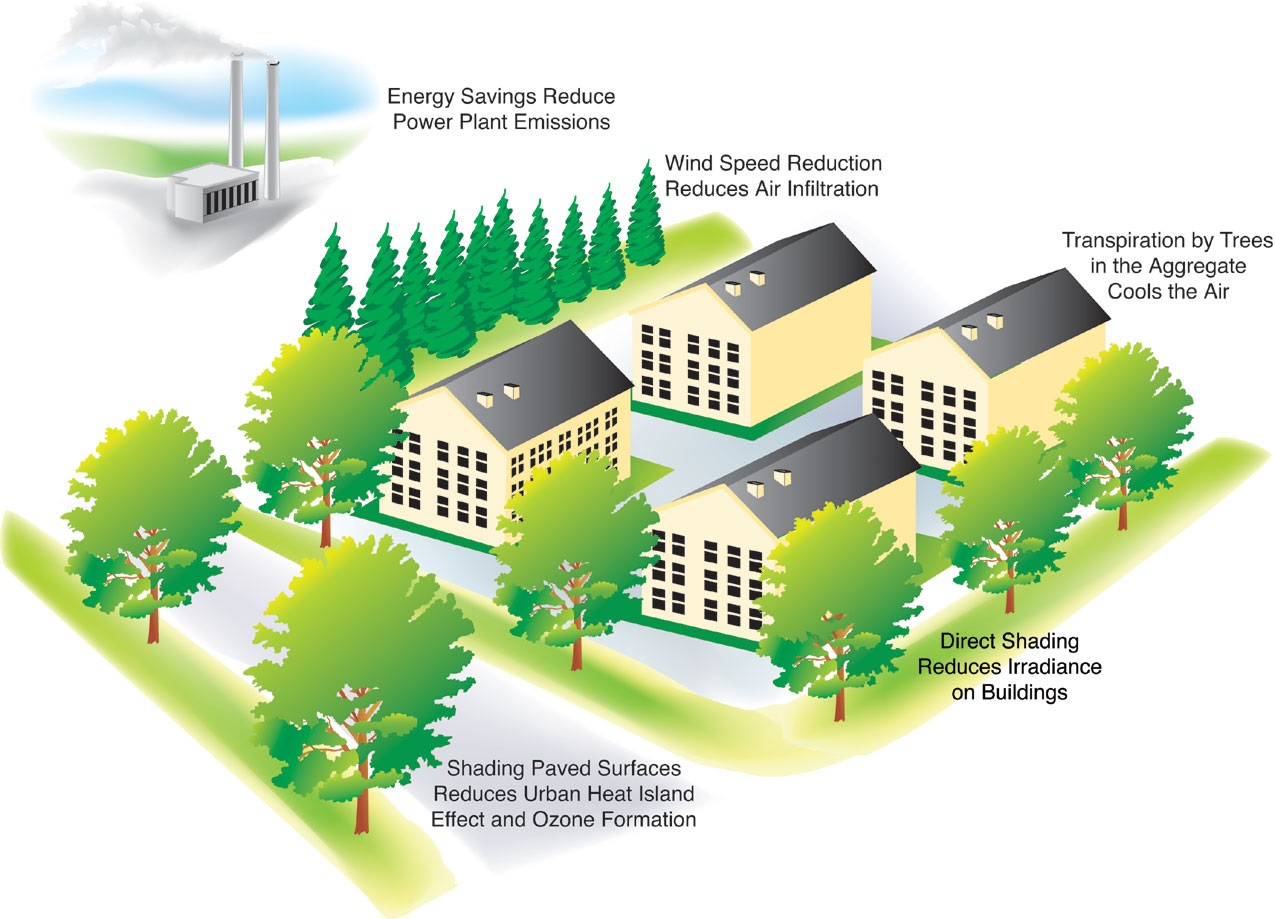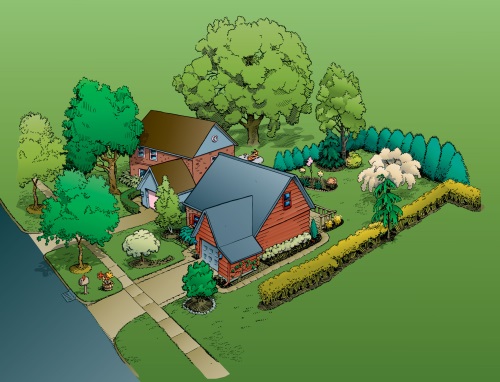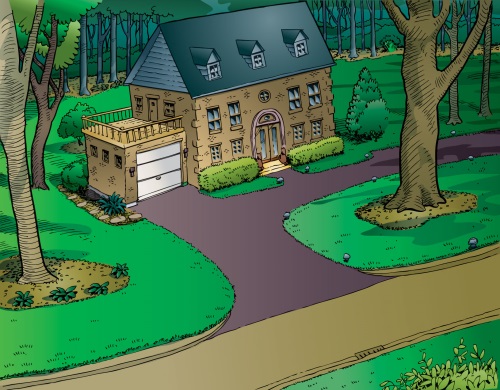Pruning Trees
by Communication Department
Dallas, TX
Pruning is the most common tree maintenance procedure. Although forest trees grow quite well with only nature's pruning, landscape trees require a higher level of care to maintain their structural integrity and aesthetics. Pruning must be done with an understanding of tree biology. Improper pruning can create lasting damage or even shorten the tree's life.
Reasons for Pruning
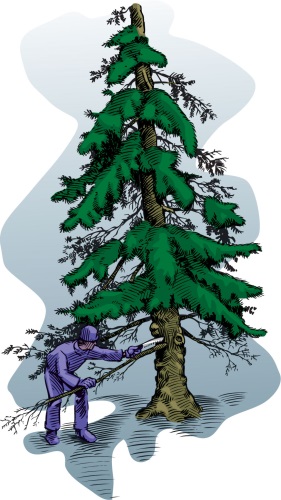
Because each cut has the potential to change the growth of the tree, no branch should be removed without a reason. Common reasons for pruning are to remove dead branches, to improve form, and to reduce risk. Trees may also be pruned to increase light and air penetration to the inside of the tree’s crown or to the landscape below. In most cases, mature trees are pruned as corrective or preventive measures, as routine thinning does not necessarily improve the health of a tree
When to Prune
Most routine pruning to remove weak, diseased, or dead limbs can be accomplished at any time during the year with little effect on the tree. As a rule, growth and wound closure are maximized if pruning takes place before the spring growth flush.
A few tree diseases, such as oak wilt, can be spread when pruning wounds provide access to pathogens (disease-causing agents). Susceptible trees should not be pruned during active transmission periods.
Pruning Techniques
Specific types of pruning may be necessary to maintain a mature tree in a healthy, safe, and attractive condition.
- Cleaning is the removal of dead, dying, diseased, weakly attached, and low-vigor branches from the crown of a tree.
- Thinning is selective branch removal to improve the structure and to increase light penetration and air movement through the crown. Proper thinning opens the foliage of a tree, reduces weight on heavy limbs, and helps retain the tree’s natural shape.
- Raising removes the lower branches from a tree to provide clearance for buildings, vehicles, pedestrians, and vistas.
- Reduction reduces the size of a tree, often for utility line clearance. Reducing a tree’s height or spread is best accomplished by pruning back the leaders and branch terminals to secondary branches that are large enough to assume the terminal roles (at least one-third the diameter of the cut stem). Compared to topping, reduction helps maintain the form and structural integrity of the tree.
Call us!
Hector Arriaga Tree Removal, and Care Specialists
Contact us and we’ll assist you with
any services you need!
Pruning Young Trees
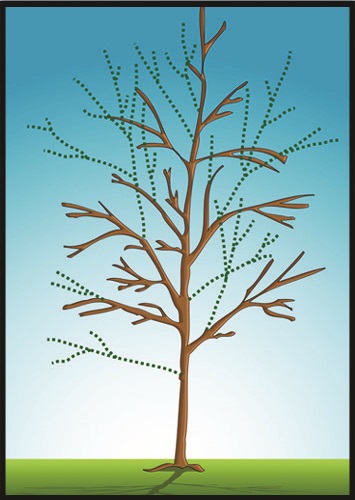
Proper pruning is essential in developing a tree with a strong structure and desirable form. Trees that receive the appropriate pruning measures while they are young will require less corrective pruning as they mature.
A good structure of primary branches should be established while the tree is young. These limbs, called scaffold branches, are a mature tree's framework. Properly trained young trees will develop a strong structure that requires less corrective pruning as they mature. For most young trees, maintain a single dominant leader growing upward. Do not prune back the tip of this leader or allow secondary branches to outgrow the main leader.
Pruning Palms
Most pruning of palms is done to remove dead or dying fronds, inflorescence (flowering), and/or fruiting clusters, particularly those that may be a potential risk to the public, such as coconuts. Pruning is usually conducted at least biannually. Coconuts may be pruned as often as every 3 to 4 months to minimize the risk of injury or damage from the heavy fruit. Great care should be taken to avoid any damage to the terminal bud or trunk when removing fronds.
It is best for the palm if green fronds remain intact. Overpruned palms may have slower growth and may attract pests. Climbing spikes should generally not be used to climb palms for pruning, because they wound the palm trunk.
Don’t Top Trees!
Topping is perhaps the most harmful tree pruning practice known. Yet, despite more than 25 years of literature and seminars explaining its harmful effects, topping remains a common practice.
Topping is the indiscriminate cutting of tree branches to stubs or to lateral branches that are not large enough to assume the terminal role. Other names for topping include “heading,” “tipping,” “hat-racking,” and “rounding over.”
Alternatives to Topping
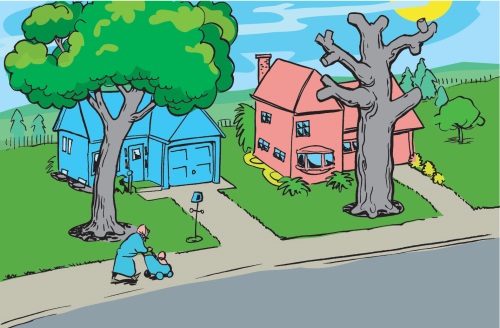
Sometimes a tree must be reduced in height or spread, such as for providing utility line clearance. There are recommended techniques for doing so. Small branches should be removed back to their point of origin. If a larger limb must be shortened, it should be pruned back to a lateral branch that is large enough (at least one-third the diameter of the limb being removed) to assume the terminal role. This method of branch reduction helps to preserve the natural form of the tree.
However, if large cuts are involved, the tree may not be able to close over and compartmentalize the wounds. Sometimes the best solution is to remove the tree and replace it with a species that is more appropriate for the site.



